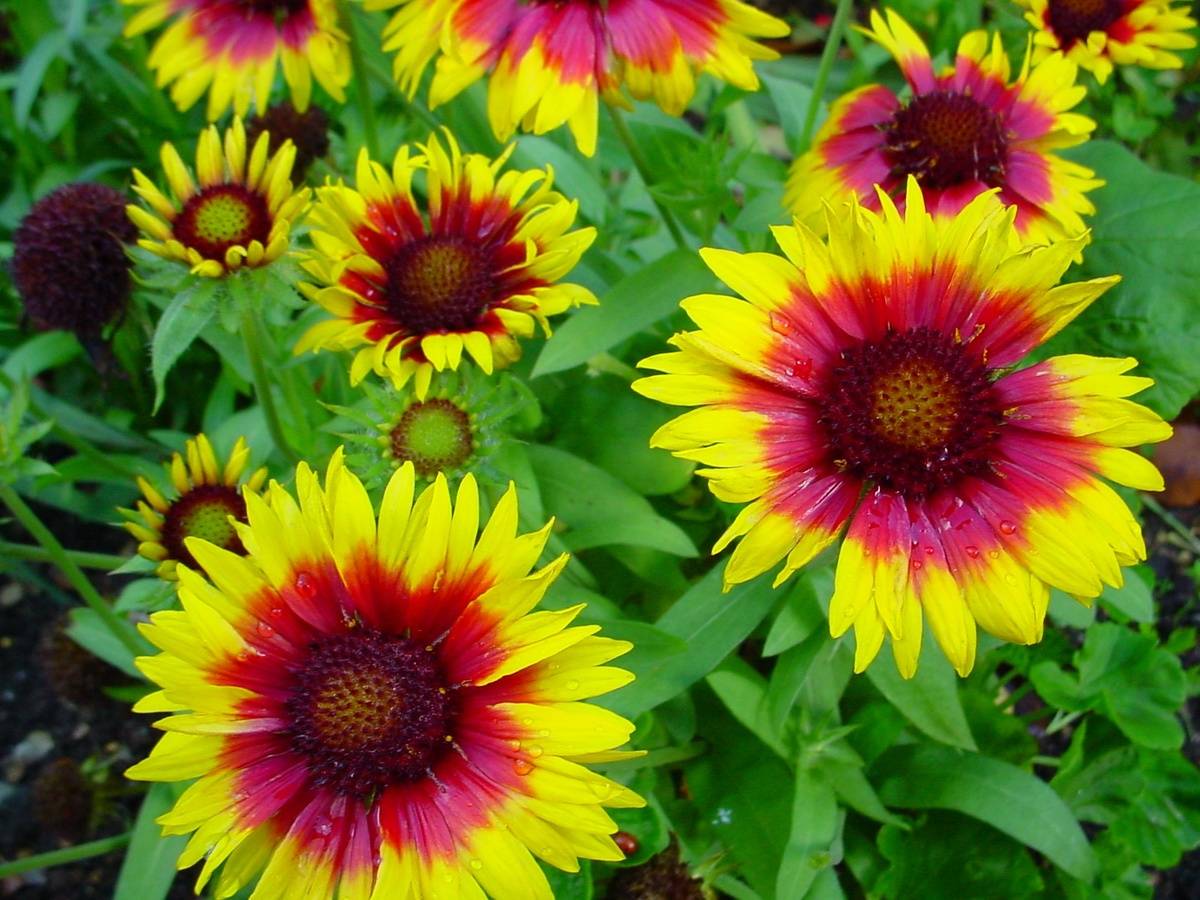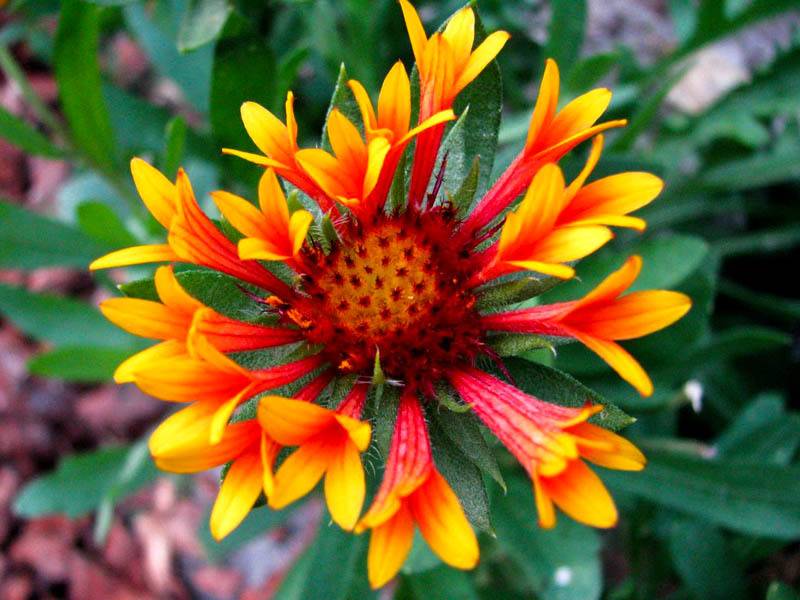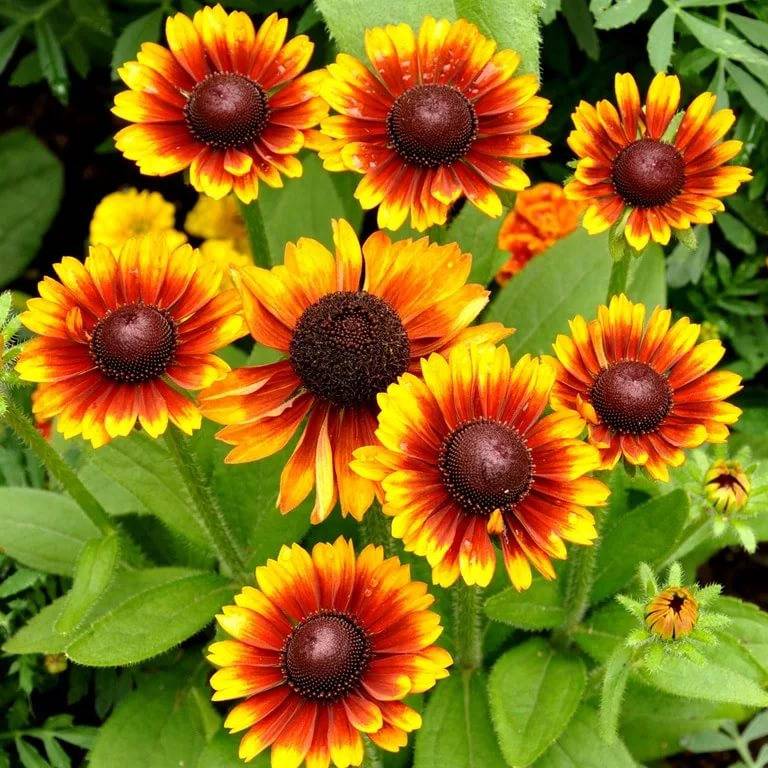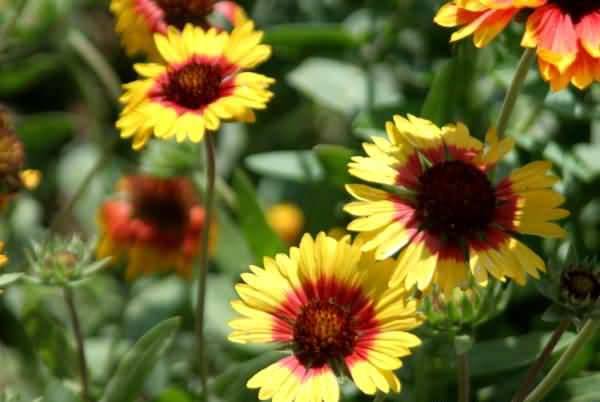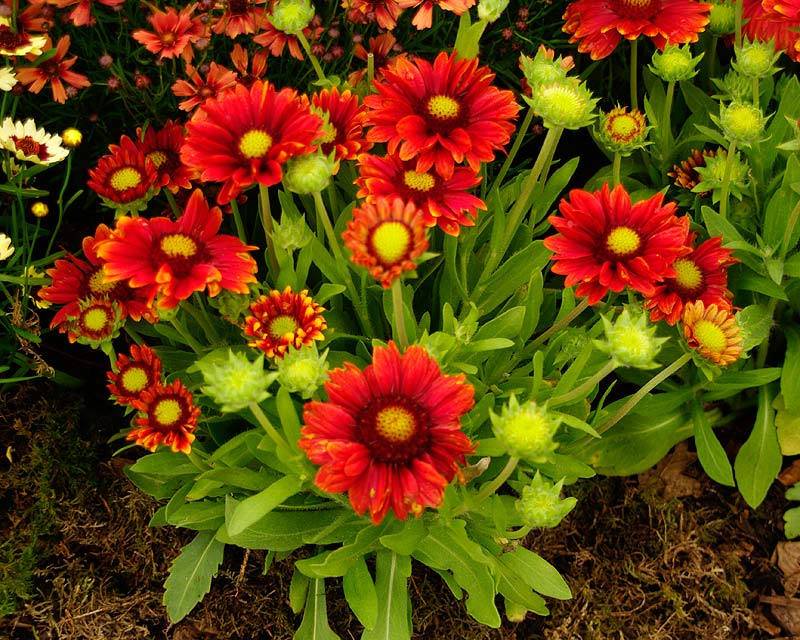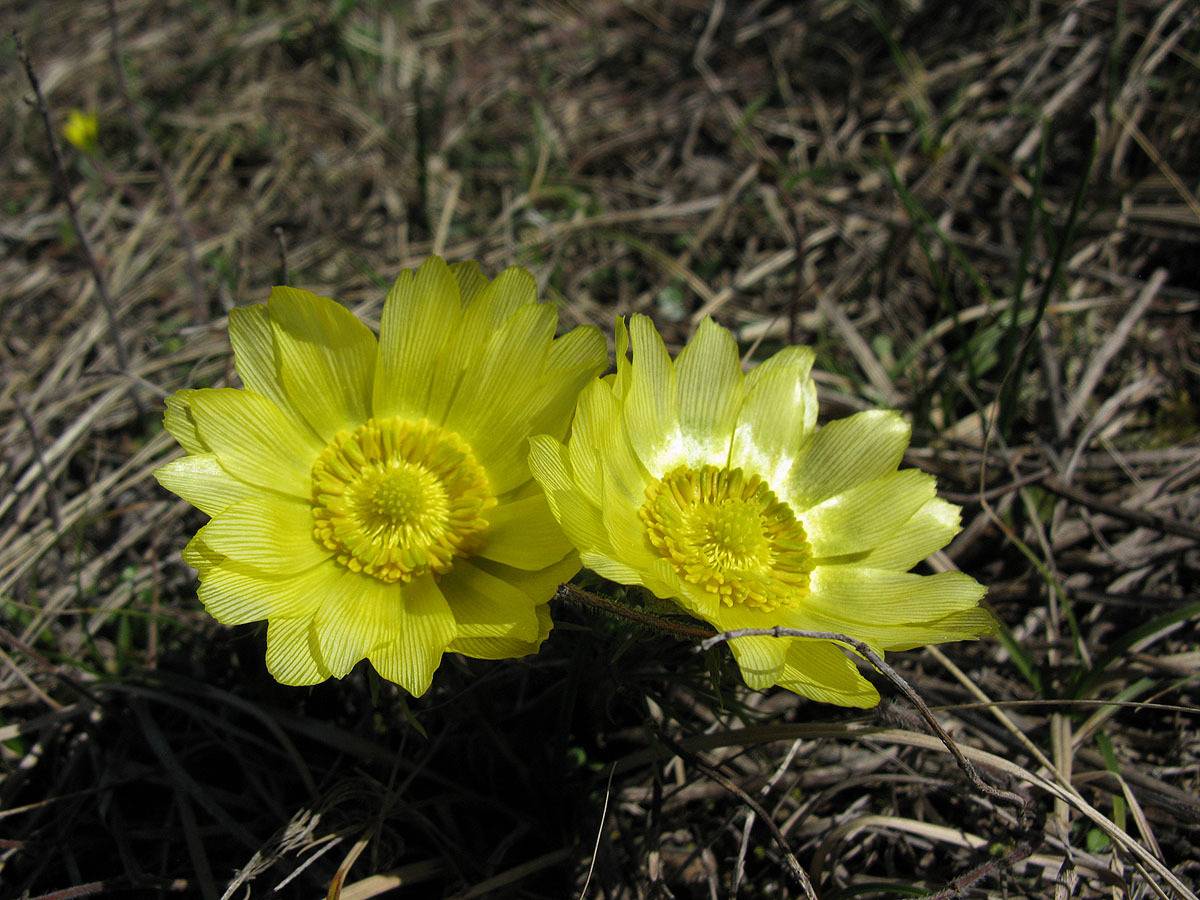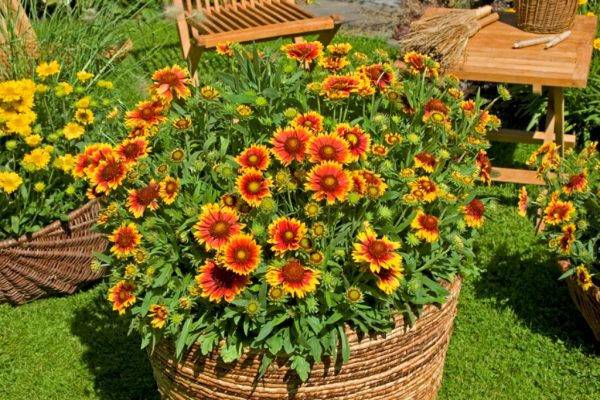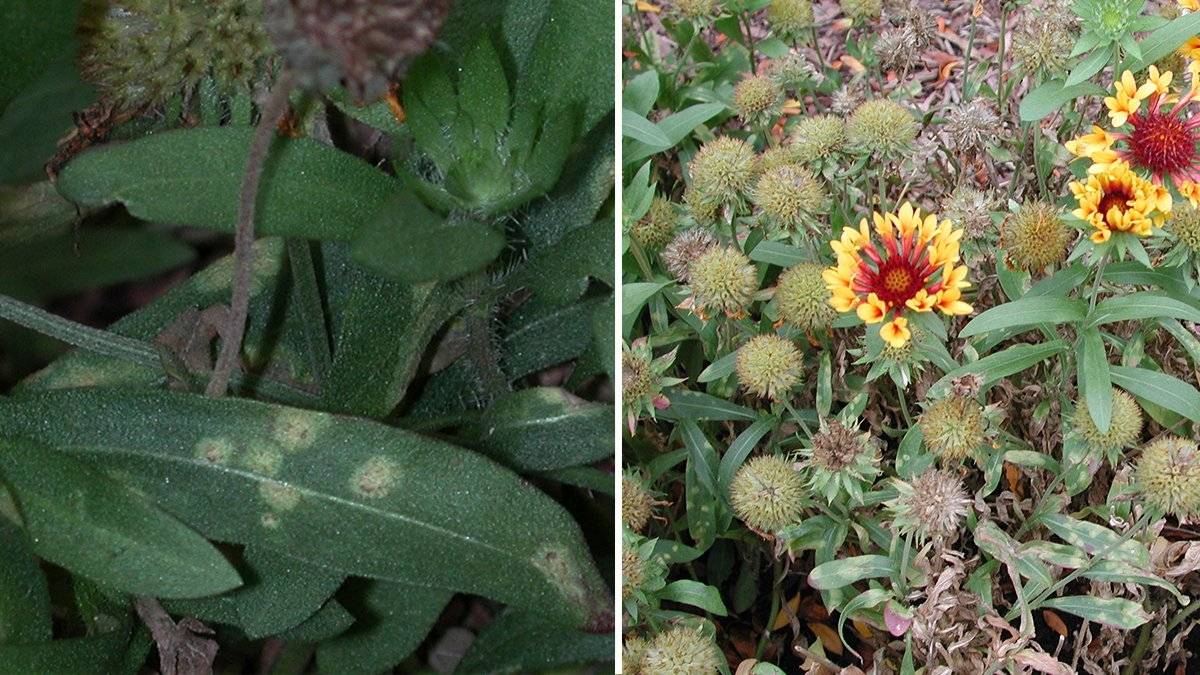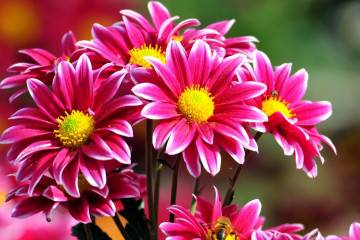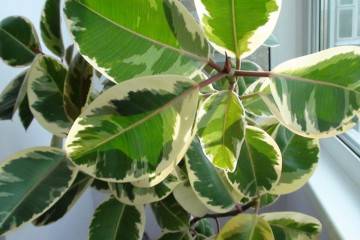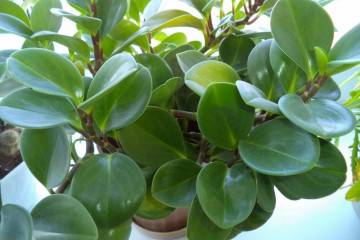Gaillardia perennial: planting and caring for a flower
Content:
- Botanical description
- Types and varieties of perennial and annual Gaillardia
- Use in landscaping and combination with other colors
- Preparation of perennial Gaillardia for planting in open ground
- How to plant this beautiful flower
- Reproduction
- Soil for plants
- Choosing a place on the site
- Watering frequency and water quality requirements
- Preparing for winter
- Annual Gaillardia diseases and pests
For those who like hardy perennials that have long flowering times, consider growing Gaillardia, also known as blanket perennial. The plant is very showy and easy to plant. The article below discusses what perennial Gaillardia looks like, planting and caring for a plant at one time or another.
Botanical description
Gaillardia is a plant with long flowering times throughout the summer season. It will be especially interesting for those gardeners who love flowers that look like large daisies.
Gaillardia is a growing herb of the genus Gaillardia. It can grow in temperate, subtropical or Mediterranean climates and is very hardy.
Her homeland is North, East and South America. The flower belongs to the Astrov family. Its "relatives" are sunflower, chrysanthemum, gerbera.
Gaillardia flower has very bright colors in red, yellow and orange tones. Flowers remind people of brightly colored rings of fire. The inflorescences are large, up to 10 cm in diameter. The flowers are characterized by an increased flowering time and delight the eye for months throughout most of the summer season from early summer to autumn. The ends of the petals are ragged. Some varieties come with double petals. Most species have chamomile-like petals. Some have an unusual tube at the end.
Features of Gaillardia:
- there are about 20 species;
- can be annual and perennial;
- leaves are thick and rich;
- the shape of the leaves is oblong with pointed tips;
- there are terry varieties in the shape of a funnel;
- double petals on inflorescences grow in three rows with a convex middle;
- the edge of the inflorescence is lighter than the middle;
- flower size from 30 to 80 cm on average;
- flowering time at least 60 days;
- durable in a bouquet.
Types and varieties of perennial and annual Gaillardia
In landscape design, two types of plants are mainly used: spinous Gaillardia and hybrid. Outwardly, they are very attractive, but other varieties are also common.
Gaillardia hybrid (Gaillardia hybrida)
This variety comes from the North American species. Grown as a biennial. Grows well in fertile soil types.
Main characteristics:
- the plant is deeply rooted;
- the height of the shoots is 50-120 cm;
- the flower is presented in the form of a bunch of rosette leaves;
- the stems and leaves are pubescent;
- flower baskets are placed singly on long inflorescences;
- blooms in July-September.
Popular varieties:
- Primavera is a short, compact bush about 25 cm in height;
- Arizona San - dwarf shrub up to 20 cm, which is characterized by lush flowering;
- Zonne - the height of the bush is 0.5-0.6 m.
Gaillardia beautiful (Gaillardia pulchella)
Another name is krasava. Refers to annual plants. Loves sunny places, fertile soil types with a neutral reaction. It tolerates drought and high humidity well.
Features of the variety:
- plant height 40-60 cm;
- stems are long and stiff with delicate hairs;
- leaf length 10 cm;
- flowers are purple, red, yellow and brown;
- flower diameter 6 cm;
- flowers can be double;
- blooms from July to September.
Varieties:
- painted (Picta) has large inflorescences, which can be double and semi-double;
- Gaillardia Lorenziana (Gaillardia Lorenziana). Terry inflorescences-baskets have a large spherical shape.
Lanceolate, or obtuse (Gaillardia lanceolata)
It is a small bush, reaching a height of 50 cm. The stems are straight, the leaves are oblong, light green. Peduncles are covered with fluffs in large numbers. The color can be different.
Gaillardia Arizona Red Shades
This large-flowered Gaillardia is winter-hardy and easily tolerates heat. Gaillardia series Arizona begin to bloom a month earlier than other varieties. Flowering begins in late spring and continues until frost. Plants grow up to 30-35 cm in height and are carriers of large flowers (up to 12 cm). Their color is a mixture of terracotta red.
Gaillardia spinous
This variety of perennial Gaillardia reaches a height of 70 cm. It is characterized by erect and ducking shoots in the lower part. The leaves are elongated, pubescent, the edges are serrated. The diameter of perennial spinous Gaillardia flowers is 10-12 cm. The flowers are tubular, yellow (amber) in color.
Gaillardia Arizona Redshades
With its bright two-tone color, the variety is excellent for filling the space, as it grows in the form of large bushes about 40 cm high. This variety is winter hardy and can be used for cultivation in the north.
Adonis, or adonis
This is one of the first spring flowers, the appearance of which indicates the beginning of spring. Belongs to perennial plants of the Buttercup family.
Characteristics:
- height up to 50 cm;
- many stems forming dense shoots;
- thick rhizome;
- flowers are single with narrow lobules, they are painted in bright yellow color;
- blooms in March-May.
Gaillardie Burgundy
It is a sprawling bush that needs support. Stems are erect, leaves are elongated, dark green, smooth. Gaillardia flowers are 12-15 cm in diameter. They are bright red in color. The variety blooms in June-July.
Use in landscaping and combination with other colors
Gaillardia is used in landscape design in flower beds quite often due to the long flowering and appearance of the flowers. The bushes are compact, do not interfere with other plants nearby. Suitable for alpine slides.
They go well with such plants as:
- cornflower;
- bell;
- marigold;
- aconites;
- delphinium;
- non-flowering herbs;
- low varieties of sunflower.
Preparation of perennial Gaillardia for planting in open ground
Features of Gaillardia transplant for beginner gardeners:
- transplanting into open ground is carried out in the spring (April) or in the fall (September);
- seedlings from pots are best planted in the fall (August-September);
- the planting site must be cleared of weeds, dug up and fertilized;
- fertilizer composition: 1 bucket of compost, a handful of superphosphate, 2 handfuls of ground wood ash.
How to plant this beautiful flower
Algorithm of actions when landing:
- Disembarkation is carried out only in the morning or in the evening after sunset.
- A hole is formed in the ground 30-40 cm deep.
- Fill the hole with water.
- Fertilizer is added.
- After absorbing water, a plant is placed in the center of the hole from the pot.
- Sprinkle with earth.
Sowing seeds in the ground
When to plant Gaillardia and growing from seed are interesting questions.
Seed preparation:
- the collection is carried out after the plant has faded;
- dry buds are cut with scissors and placed in a bag;
- 1-2 weeks hang bags with seeds for drying.
Algorithm for growing from seeds:
- Planting seedlings in boxes is carried out in February-March.
- Direct planting in the ground is possible in late autumn.
- Before sowing, the soil is fertilized with sand and ash.
- Deep long grooves (holes) are created into which seeds are sown.
- After planting, the holes should be watered so that the earth is not washed out with the seeds.
- After 1.5-2 weeks, the first shoots appear.
Reproduction
Among the methods of reproduction of Gaillardia, only two are in greatest demand.
By dividing the bush
For this method, an adult Gaillardia bush is divided into several small bushes. Thus, new plants are obtained and old ones are renewed. One bush is divided into 3-4 parts.
You can divide the bushes in the fall, then the flower will delight the gardener with its flowering in the spring. When dividing a bush in spring, the flower may not bloom.
Cuttings
This method is used in the spring, in March-April. Carrying out technology:
- Cut the cuttings 5-10 cm long.
- For 1 day they are placed in a glass of water.
- Planted in a pot of earth or a box.
Soil for plants
For cultivation, choose a well-draining soil that is loose and sandy. Better to use a neutral pH.
Organic matter, such as compost, must be added to the soil during planting, and then every year at the beginning of spring.
Choosing a place on the site
The Gaillardia plant loves bright sun and blooms best when daylight hours last 6-8 hours. The flower can withstand partial shade, but in this case the inflorescences will become long and the plant will not bloom for a long time.
The choice of a place is made, observing the following rules:
- choose well-lit, weed-free places;
- light is the main requirement for growing a flower;
- bushes should not be in the shade of other plants in the garden;
- a garden elevation is ideal.
Watering frequency and water quality requirements
These flowers grow normally on dry and porous soils and do not need additional intensive watering. If a prolonged drought is predicted, it is worth watering the plant, but not particularly zealous.
Watering is carried out directly into the hole under the root. Water should not come into contact with the leaves.
Water requirements:
- it should settle for 1-2 days;
- rain will do;
- it is better not to use cold.
Watering rules:
- can be watered once a day during dry summer;
- one bush requires 1.5-2 liters of water;
- watering is carried out in the morning or in the evening.
Preparing for winter
Basic rules for preparing a plant for frost:
- at the end of September, the entire aerial part is cut off at the root, leaving the columns 3-5 cm;
- before severe cold, young shoots should be covered with coniferous paws, peat, hay, straw, agrotex.
Annual Gaillardia diseases and pests
Gaillardia is often sick. The main causes of diseases:
- improper care regimen;
- landing in the shade;
- abundant watering;
- rainy and cold summer.
The main diseases of Gaillardia:
- gray rot. Signs: leaves darken, curl up, dry out. Control methods: insecticides;
- white rust. Signs: A white, mildew-like coating on the leaves. There is no cure, the bush must be destroyed;
- powdery mildew. Signs: Leaves are covered with a white coating that looks like flour. Cause of the disease: frequent watering. Ways of struggle: preparations of topaz, strobe, maxim, abiga-peak, alirin-B.
These diseases can be controlled with proper watering and the application of antifungal sprays as needed.
Among the pests are dangerous:
- aphid;
- whitefly.
To combat aphids, use a solution of nettle for spraying 1-2 times a week. To combat whiteflies, tanrek or fitoverm products are used.
Gaillardia is a very beautiful plant that can be grown both outdoors and at home. Its characteristic features: fast growth, good reproduction, long and abundant flowering. With proper flower care, it will delight the gardener for a long time and be a wonderful decoration of the garden. Proper seating and grooming is very important for Gaillardia.
This compact perennial plant produces a mass of fiery orange flowers of large diameter. Butterflies are very attracted by its bright colors. Since these plants bloom from early summer to autumn, they provide continuous color in containers. Gaillardia requires a minimum of care after planting and is heat tolerant and prefers to grow in poorer soil types.
